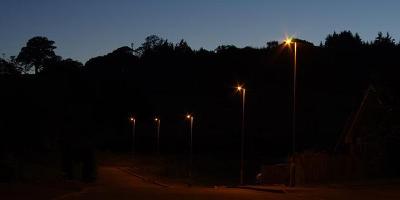Guidance on External Lighting

Based on Bat Conservation Trust and Institution of Lighting Professionals Guidance Note GN 08/23
Why Lighting Matters
Artificial lighting can have serious impacts on bats and other nocturnal wildlife. Poorly designed lighting can disrupt bat foraging, commuting routes, and roosting behaviour. To protect biodiversity, lighting proposals must be carefully considered in all planning applications.
Key Principles for Wildlife-Friendly Lighting
- Avoid Unnecessary Lighting
Only light where and when it is needed. Consider whether lighting is essential at all. - Use Warm, Low-Intensity Light
Choose lights with a warm colour temperature (ideally <2700K) and low lux levels to reduce ecological impact. - Direct Light Downwards
Use full cut-off fittings or hoods/shields to prevent upward or horizontal light spill. - Control Timing
Install timers, motion sensors, or dimmers to limit lighting to necessary periods only. - Avoid Sensitive Areas
Do not light:- Bat roost access points
- Hedgerows, treelines, or watercourses used as bat commuting routes
- Foraging habitats such as meadows or woodland edges
- Use Narrow Beam Angles
Focus light only where needed to minimise spill into surrounding habitats.
Planning Application Requirements
Sidenote for Applicants: All proposed external lighting must be clearly annotated on the proposed site and elevation drawings. This should include:
- Type of light fixture (e.g. LED downlighter, bollard light)
- Quantity of each fixture
- Exact location of each light on the site
Source: Bat Conservation Trust - Artificial Lighting Guidance




